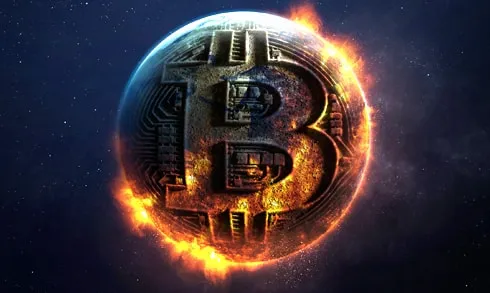|
Getting your Trinity Audio player ready...
|
On August 1, 2017 perhaps the biggest moment in Bitcoin’s volatile existence came to pass. Bitcoin forked with a 1.9MB block mined by ViaBTC. The big block mined was effectively incompatible with the existing chain, and therefore caused a divergence in blockchain, called a fork.
ViaBTC has been a shining front for the ‘big blocker’ community. Initially pushing for the Bitcoin-Unlimited client, but with failure to reach a clear majority consensus, the Bitcoin Cash fork was perhaps inevitable.
At the time of writing the combined market cap of both BCC and BTC is significantly higher than the price prior to the fork. It proves that not only did money move from BTC into BCC, but also from other cryptos and perhaps elsewhere. The outcome is clear, there was and is a legitimate market and demand for a Bitcoin to exist without a restricted blocksize.
Also at the time of writing, the price of Bitcoin was $440 USD. This price it should be noted is in an eco-system that has yet to establish its presence solidly. Many major exchanges are either refusing to list (for political reasons), or yet to list BCC as a tradeable coin. The same applies with many wallets. The price presents a strong growth potential. This is only Day 1.
It should also be stated that its strong opening has come in the face of much censorship, and heavy restistance from Core and Blockstream. Contrary to much of the fearmongering, the 1.9MB block did not cause any issues with the network whatsoever. Blocks continue to propagate, bandwidth is no issue, nodes are not dropping off (in fact they’re increasing).
Both coins now hold the same historical ledger, sharing the same genesis block. Satoshi’s words on that block are inscribed on both blockchains now.
If you dig underneath the surface, you will find the root cause of this divergence wasn’t so much a difference in the technicals (although there’s plenty of that also), but rather a difference in vision for what Bitcoin is, and what isn’t.
Segwit largely sees the Bitcoin blockchain as a settlement layer. It comes with a full block policy, which forces use cases away from the main chain and onto secondary layer solutions. Despite recent cries from the Core camp stating the mempool is now clear, it does not negate the fact that the intention is for the mempool NOT to be clear. A full block policy cannot have an empty mempool.
“There is nothing wrong with full blocks, and blocks have been “full” relative to what miners would produce for years. Full blocks is the natural state of the system” – Gregory Maxwell
CEO of Blockstream Gregory Maxwell’s comment on full blocks being the natural state of the system is in direct contradiction to the designer and inventor of Bitcoin and the blockchain, who argued that blocksize increases can be phased in versions “way ahead [of time]”.
The only reason Segwit depends on full blocks is to enable and force users onto second layer solutions for their transactions. This approach means that the main chain is therefore only used for settlement purposes, and removes the P2P component of Bitcoin as described in the whitepaper.
When Core-dev Luke-jr attempted to tell users to pay a $5 fee for every transaction to ensure success, he was really trying to create a perceived normality within the community. A paradigm shift where fees are the norm. And expensive fees at that.
When Roger Ver recently tweeted “Segwit transactions are unfairly cheap when compared with legacy transactions”, he specifically implied the comparison. That comparison is regarding the Core chain, which, by its fee structure, forces users into segwit transactions. But if you compare the fees of “Bitcoin Cash” with “Bitcoin Core”, then Bitcoin Cash wins hands down. By having a non-congested mempool, transactions on Bitcoin Cash will be much cheaper, more efficient, than what the Segwit chain will deliver.
Bitcoin traditionally never had such fees. They were trivial in value.
The vision therefore that big blockers have for Bitcoin is therefore vastly distinct. Essentially, a global currency. This concept is immeasurably different. A peer to peer electronic cash system as described in the 2008 white paper.
Hard forks are not a bad thing. Forking into two conflicting chains is a form of consensus within itself – “agree to disagree”. This should not be looked at negatively. Certainly, it appears there are wanting markets in each camp.
For big blockers at least, Bitcoin can finally grow again, and its potential can be realized, being uncapped. No more will we be in a position where congestion deems the network unreliable, with skyrocketing fees, seeing an exodus of businesses and merchants packing, wanting nothing more to do with the network.
Now is a time to rebuild, to heal the community, to regain the trust of businesses, engage new businesses and merchants, forge new areas of development, and venture into uncharted territories, including Bitcoin’s 2PDA capabilities and more.
Eli Afram
@justicemate

 07-16-2025
07-16-2025 





